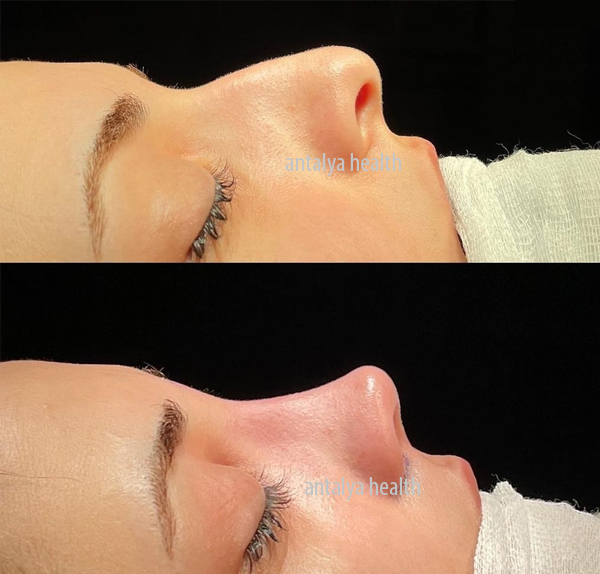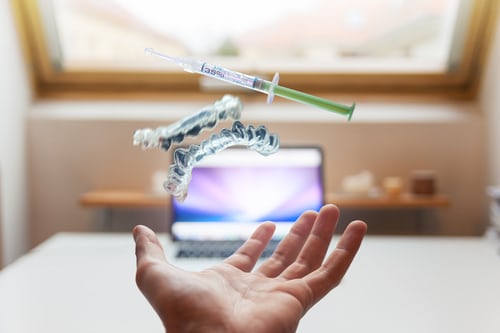What is Revision Nose Aesthetic Surgery?
Aesthetic nose surgery, the second or more surgical interventions performed in cases such as anatomical problems such as bending and asymmetry in the nose, functional problems such as nasal congestion, or the visual result is not as desired after aesthetic nose surgeries are called “revision”.
The reason why rhinoplasty; (plastic surgery) performed on the nose is among the most frequently revised surgical procedures, nose positioning in the middle of face and that the problems occurring on the nose are visible and remarkable.
Although the percentages given about the rate of occurrence of a problem requiring re-surgical application after aesthetic nose surgeries may differ widely, it is accepted that this rate is around 10-15%.

There are various factors that cause undesirable results or problems after the surgery, the most commons of which are;
- Inability to identify the problems before the operation
- The patient’s expectations are not fully understood
- Errors in surgical technique
- Structural features of the patient (very thin or thick skin, crooked nose, etc.)
- Problems experienced during the postoperative recovery period (trauma, infection, etc.) can be counted as.
Visual problems requiring revision can be divided into four different categories;
- Although there is no obvious problem in terms of aesthetics, the patient’s desired result is not achieved.
- Minor problems: minor irregularities on the nasal dorsum, slight asymmetries at the tip of the nose
- Moderate problems: Asymmetry and irregularities that negatively affect nasal breathing
- Major problems: Loss or deterioration of cartilage or bone structures, as well as severe asymmetry and deformities that may adversely affect nasal breathing.
Although it is accepted that the completion of the healing process and the final shape of the nose after rhinoplasty take between 6 months and 1 year depending on the content of the surgical intervention, the results of the changes in the nasal skin may take even longer. For this reason, it is generally recommended to wait at least one or one and a half years before performing a second operation.
The major factor that plays a decisive role in the timing of the revision surgery is the cause and content of the problem.

In cases of mild irregularities, asymmetrical formations and the patient’s thick skin or regional accumulation of excessive healing tissue, it is generally appropriate to wait for the completion of the healing (at least 1 year) and to thin the thick and oedematous tissues with cortisone injections when necessary.
Depending on the graft technique used, 1.5-2 years should be waited before a second corrective intervention is made for the cartilage graft used to shape the nasal dorsum in the first surgery.
It is preferred to perform the second operation without waiting for the recovery period in major problems that do not improve over time, but also negatively affect the patient’s nasal breathing, or asymmetry and deformities that occur as a result of post-operative blows to the nose.
Although there is no obvious problem in terms of aesthetics, the most correct approach would be to wait for at least 1 year for recovery to be completed in order to minimize the risk of third surgery in revisions to be made because the expectations of the patient cannot be met.
Revision nose surgeries are interventions that involve significant surgical difficulties due to defects in tissue planes due to the previous surgery, adhesions between the skin and cartilage or bone roof, and damage and deformities in cartilage or bone tissues.
For this reason, in order to obtain a successful result in revision surgeries, it is necessary to evaluate the existing problems very well, to plan alternative approaches such as ear and rib cartilage that can be applied during the operation, to make the necessary preparations, and to have the surgeon who will perform the surgery have sufficient knowledge and experience for such interventions.
The most common reason for revision nose surgery is that the tip of the nose sometime is not as desired. So much so that the tip of the nose completely changes the profile of the person and determines the face shape. For this reason, in case of any problem at the tip of the nose or an undesirable result in the first surgery, nasal tip aesthetics is applied within revision nose surgery.
During revision nasal tip aesthetics; the nasal bridge or septum is not intervened, and the cartilage and soft tissues at the tip of the nose are studied. While this type of surgery is generally preferred for nasal tip problems, it is also applied as a result of the presence of asymmetry at the tip of the nose or the fact that it is wide and excessively raised. Revision nasal tip aesthetics takes about 45 minutes and is usually performed under local anaesthesia. The patient can be discharged 6 hours after the operation.
Interview before Revision Nose Aesthetics Surgery
Revision rhinoplasty; It is applied in cases where the first surgery cannot be completed successfully. Factors that cause a rhinoplasty surgery to fail; It can be determined as the inability to plan the surgery in a qualified way, the doctor who will perform the surgery not being experienced and equipped, and the inability to properly care for the nose during the postoperative recovery period.
However, the emergence of an undesirable result of the person undergoing nose surgery, damage to the functional properties of the nose, and respiratory problems mean that the rhinoplasty surgery has been unsuccessful.
Before the revision rhinoplasty surgery, it is of great importance for the patient to feel ready for a new operation both psychologically and physiologically. In the second nose surgery, meeting with the doctor and planning the surgery should be done much more carefully and in detail than the first surgery.
For this reason, in addition to choosing a doctor who is an expert and experienced in his field, it is necessary to explain the complaints and the desired nose shape to the doctor in a very detailed way.
To get information about our treatments, you can call us on our phones or contact us directly on our Whats-App line.










